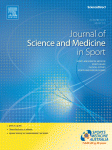 The authors of a 2014 paper on soccer injuries have forfeited their publication after revealing that the foundation of the work was based on faulty data. (Look, we could have written about letting air out of balls, yadda yadda, but the Super Bowl has come and gone.)
The authors of a 2014 paper on soccer injuries have forfeited their publication after revealing that the foundation of the work was based on faulty data. (Look, we could have written about letting air out of balls, yadda yadda, but the Super Bowl has come and gone.)
The article, which appeared in the Journal of Science and Medicine in Sport, was written by a group in Denmark and Qatar led by Cristiano Eirale, a sports medicine researcher at the Aspetar-Qatar Orthopedic and Sports Medicine Hospital, in Doha. It showed goalies had a lower rate of injuries during training than field players.
Trouble was, someone called a foul.
Per the retraction notice:
The Authors regret to inform that, upon re-analysis of the data which are the basis of the paper, a database was utilized with mistakes in coding of players and injuries. This resulted in errors in the count of injuries, exposure and therefore their incidence. The two major findings of the published paper are not the findings in the re-analysis and as such the paper has been retracted. The first Author takes full responsibility for this error.
The paper, “Different injury pattern in goalkeepers compared to field players: a three-year epidemiological study of professional football,” has yet to be cited, according to Thomson Scientific’s Web of Knowledge.
According to the abstract:
Of the 527 players, 49 were goalkeepers. Sixty-seven injuries occurred during 17.858 h of exposure. Goalkeepers had a lower total (p=0.01) and training (p=0.007) injury incidence than field players, while there was no injury difference during matches (p=0.279). Moreover, goalkeepers presented a lower incidence of injuries that were: non contact (p=0.002), traumatic (p<0.001), strains (p<0.001), thigh (p<0.001), and hamstring (p=0.038). Adductor strains were the most common subtype of injury for goalkeepers and this incidence was higher in goalkeepers than in field players (p=0.045). In goalkeepers, mean lay off time for adductor strains was 2.5 times longer than for hamstring strains. More than one third of the overuse injuries were hip and groin injuries. While the overall and lower body injury incidence in goalkeepers was lesser than in field players, upper body incidence was higher.
Football goalkeepers have a peculiar injury epidemiology, possibly due to their specific physiological and biomechanical performance requirements. Goalkeepers are prone to acute adductor and overuse hip and groin injuries, while muscle strains, in particular located in the hamstrings, are lower compared with field players. Specific prevention program should be implemented in this category of footballers.
Eirale and his colleagues also wrote a 2012 letter in the British Journal of Sports Medicine about soccer injuries in Qatar. That might need a second look, as well.
In the end, although we’ve had a little fun with the subject matter, the researchers are to be commended for what appears to be an instance of doing the right thing.
As Andrés Cantor might say, isn’t that the goooooooooooooool?